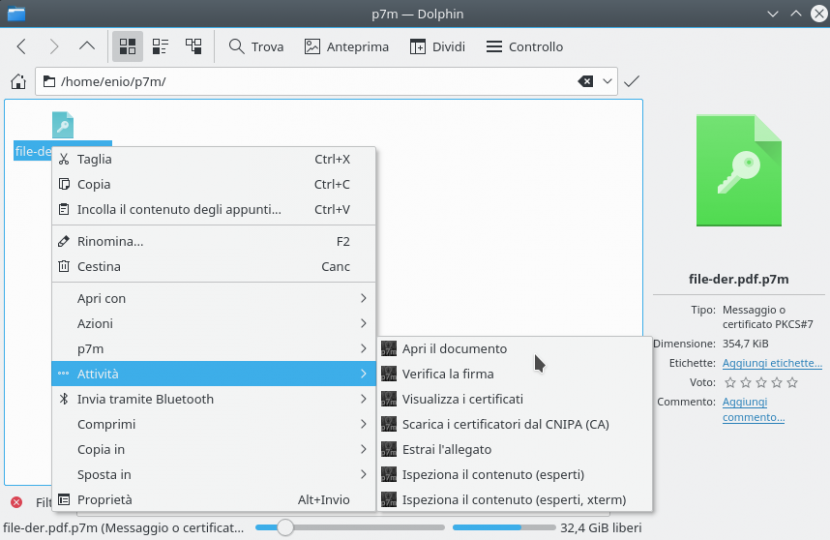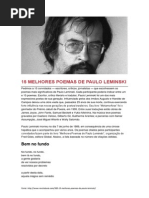P7m Viewer
The P7M file type is primarily associated with PKCS #7 MIME Message. See Section 3.2 in RFC 2311. This is basically a secure E-mail file sent in encrypted form. If everything is set up properly your E-mail program should have downloaded a public key necessary to decrypt the file. P7mViewer Overview Secure messaging can create as many problems as it is intented to solve - software upgrades, staff training, security policies can effectively halt communication Between business partners to a stop.
Primarily, a P7M file extension is a type of S/MIME Digitally Encrypted Message file developed for the Parallels Desktop for Mac software program by Parallels. Our internal web tracking data indicates that Windows 10 operating system users, and those living in United States, are the most likely to use S/MIME Digitally Encrypted Message files.

P7M file extension is used to denote adigitally signed and encrypted E-Mail. Both the E-Mail message itself and anyattachments are added to the P7M envelope, which can only be opened by clientswith the appropriate key.
P7M files are an implementation of theSecure/Multipurpose Internet Mail Extension (S/MIME) standard which supportspublic key encryption. S/MIME provides essentially two cryptographic serviceswhich can be used by E-Mail applications. The first is digital signatures,which can be used to authenticate a message, check its integrity and prove itsorigin or source. The second is encryption, which is used to ensure that dataremains both private and secure, even if an E-Mail is intercepted by athird-party.
As P7M files are encrypted, it is notpossible open P7M file to extract the contents without the appropriate software anddecryption key. E-Mail applications with S/MIME support can be configured toautomatically retrieve the necessary key to decrypt received P7M files anddisplay the resultant message as an ordinary E-Mail. However, clients withoutsupport, such as web-based E-Mail services, will simply show the encrypted P7ME-Mail as an attachment.
Encryption is utilised by P7M files toensure data privacy even if the E-Mail was accidentally sent to the wrongaddress or was intercepted during transmission. However, this has thedisadvantage that anti-virus software is unable to detect malware, as it willnot be able to decrypt the E-Mail once it has been created. Therefore, any attachmentsreceived in a P7M file should be checked prior to opening, even if they arefrom a known and trusted source.
You can open P7M files in any E-Mailclient that supports S/MIME provided that the necessary public key isavailable. You can open P7M files using other applications such asCryptigo p7mViewer, which is designed specifically for opening signed andencrypted E-Mails.
| Click here to return to the 'How to view smime.p7m email attachments' hint |

Well, you could switch to Mail.app - as it has no problems with signed messages.
At least, I have not have had any problems with it the last 1-2 years...
Maybe PGP signing is a problem?
Mail.app even signs / encrypts the message for you if you have a certificate in your keychain... :-)
---
/Marook
E-mail is many things, but, unfortunately, 'safe' is not one of them.
There is an old saw that you should never send something in e-mail that you
would mind seeing on the front page of the New York Times, and that's as
true today as it was when e-mail first became popular in the 90's. E-mail
(and, in fact, all Internet traffic) travels through many servers between
your computer and its final destination, all belonging to strangers. And
while it's true that the sheer volume of e-mail that travels the 'net these
days is probably enough to keep yours safe even if someone does care enough
to snoop, I still wouldn't send a credit card number or the PIN for my ATM
card through e-mail.
This is a long-standing problem that has yet to be fully addressed by
standards, but there is a solution, albeit one that requires you and your
e-mail partner to take some steps. You can get a free digital certificate
that will allow you to digitally 'sign' your e-mails and allow others to
send you encrypted e-mail. You can also send encrypted e-mail to anyone who
sends their certificate to you.
This all sounds more complicated than it is. Basically, the steps are to
sign up for a certificate, install that certificate (handled automatically
for you by the Mac), then start using it. If someone sends you their
certificate in e-mail, you simply have to tell your e-mail program to save
it (again, handled automatically if you use Mail, and requiring one step if
you use Entourage).
You can get a free certificate from a company called Thawte
(http://www.thawte.com) and can find the complete instructions (and what is
probably a better explanation than the one I just provided) here:
<'>http://tinyurl.com/yxz7rj>;
The direct page for the free e-mail certificate is here:
<'>http://tinyurl.com/9atq7>;
This hint is nonsense. All mainstream e-mail applications will work with s/mime messages. As a previous commenter noted, Mail.app works perfectly. Also, Thunderbird works, and Entourage works, and eudora works.
I suspect that the author of this hint was using Hotmail or something. This is not a Mac hint! Hotmail doesn't read s/mime messages on windows either! Use a real e-mail client!
JP
---
Pell

I have found that if you save a S/MIME e-mail message from Entourage you can open it in Mozilla to decrypt it. I have a mail rule for emails that contain smime attachments. The rule triggers an AppleScript to save the message and then open it in Mozilla. It is not the most elegant solution, but it works for the few signed e-mails I receive every month.
Well, it also works that way if you are using Claris eMailer...
Sorry, but please move over Eudora. Even Microsoft Applications can handle S/MIME nowadays. I would still suggest to keep away from Microsoftware. Instead user the wonderful Mail.app or Thunderbird!
Pepi
 This is simply a Eudora problem (which the OP mentioned he was using). Eudora does not support SMIME on OSX and afaik there is no Eudora Mac OSX plugin developed to do this.
This is simply a Eudora problem (which the OP mentioned he was using). Eudora does not support SMIME on OSX and afaik there is no Eudora Mac OSX plugin developed to do this. From http://emperor.tidbits.com/webx/TidBITS/Talk/54
There is no working S/MIME plugin available for current Eudora on MacOS X. Entrust's docs are pretty clear that they support up through Eudora 5.0.2 and MacOS 9. Sadly, Qualcomm's SDK for plugins also seems to be rather outdated for the Mac and seems to demand CodeWarrior. That reduces the audience for writing such a plugin, since the free dev tools for Mac OS X are perfectly suitable for that sort of work.
Eudora for Mac was neglected by Qualcomm from 2004 onwards, before they let it go completely. Perhaps it's time for the OP to update his mail client?
P7m Viewer Free
ft.
P7m Viewer Chrome
There is an Entrust plug-in for Eudora. We use it at work.
P7m Viewer Smime.p7m
AFAIK the Entrust plugin is not available for private person, only companies can buy it.